Blur. Not the band; the effect. The car world is changing so fast that even if you devour every road test report, read every analysis of investor calls with CEOs and tune into every press conference, things can still get a little blurry.
Some totemic examples of how unpredictable the industry has become. Only seven years ago, Audi won Le Mans using diesel, but today most manufacturers can’t ditch the stuff quickly enough. Five years ago, the late Sergio Marchionne told us that no Ferrari SUV would be forthcoming and the company would need to be sufficiently disciplined not to bastardise the brand; yet mere months from now, the Purosangue will arrive.
And four years ago, you couldn’t lay hands on anything that could even loosely be called a driver’s EV (not unless you were prepared to wire seven figures to a 30-year-old Croatian); yet today, from our cold base in a dingy Berkshire lay-by, we’re comparing two ready-to-rumble, series-production performance saloons lavished with eye-watering R&D spend by two of the greatest names in the business and, apart from photographer Luc Lacey’s Cupra Formentor, there’s not a hydrocarbon in sight. Never mind who wins, the true lede here is the fact that we’re staging this kind of contest at all.
Alas, we need a winner, and though this is most definitely the Porsche Taycan’s fight to lose, on paper it’s eaten for breakfast by the new BMW BMW i4 M50. Costing £63,850, this is the pinnacle in BMW’s first range of all-electric saloons, but it undercuts even the entry-level Taycan by £11,000. Despite this, with 537bhp, it’s the more powerful car of the two and arrives with torque seeping from its millimetre-perfect shutlines.
And it doesn’t stop there. The i4 M50 is more spacious inside and, with 324 miles of claimed range, compared with 301 miles for the Porsche (this one fitted with the optional range-extending Performance Plus battery), is marginally longer-legged. Turning up dressed in Frozen Berry paint over purple leather, our deeply unserious Taycan is taunting its adversary, and Porsche GB’s decision to deploy a pink car shows a cheeky confidence that has been earned. However, BMW clearly isn’t mucking about with the i4 M50. This contest won’t be easy, even for the car that now outsells the Porsche Porsche 911.
![]()


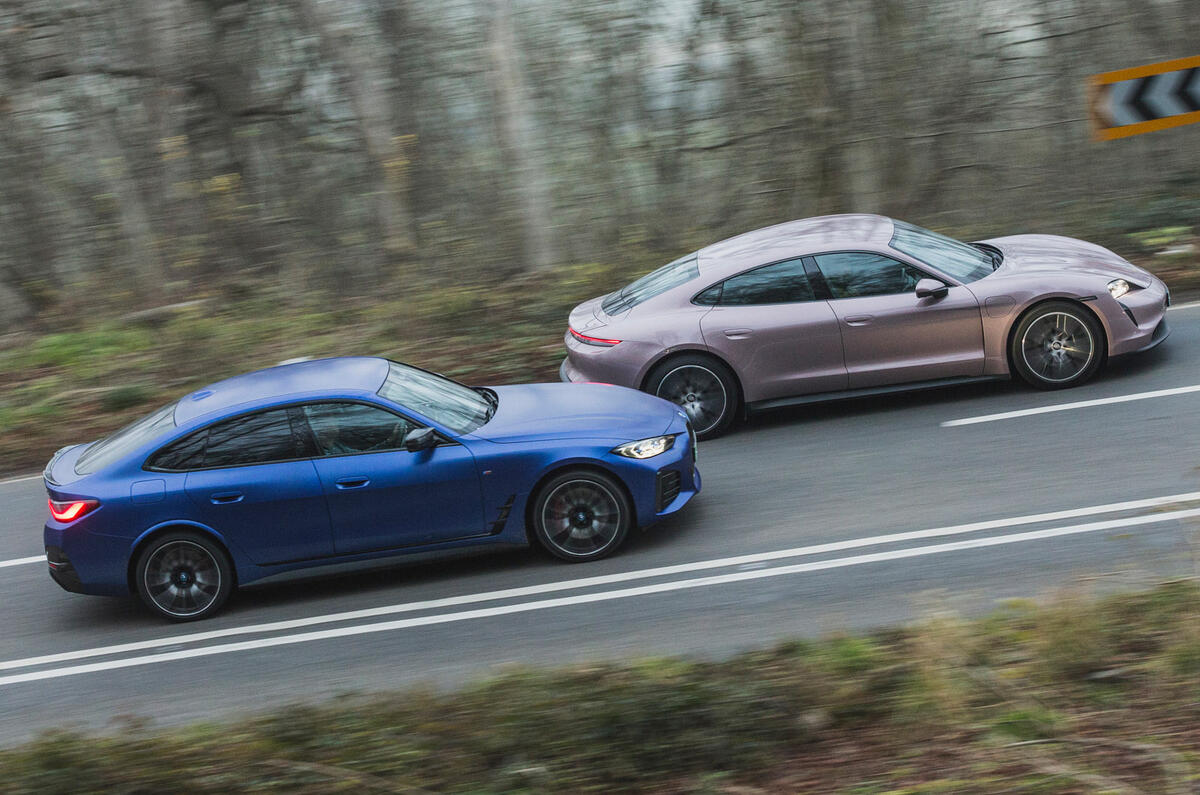
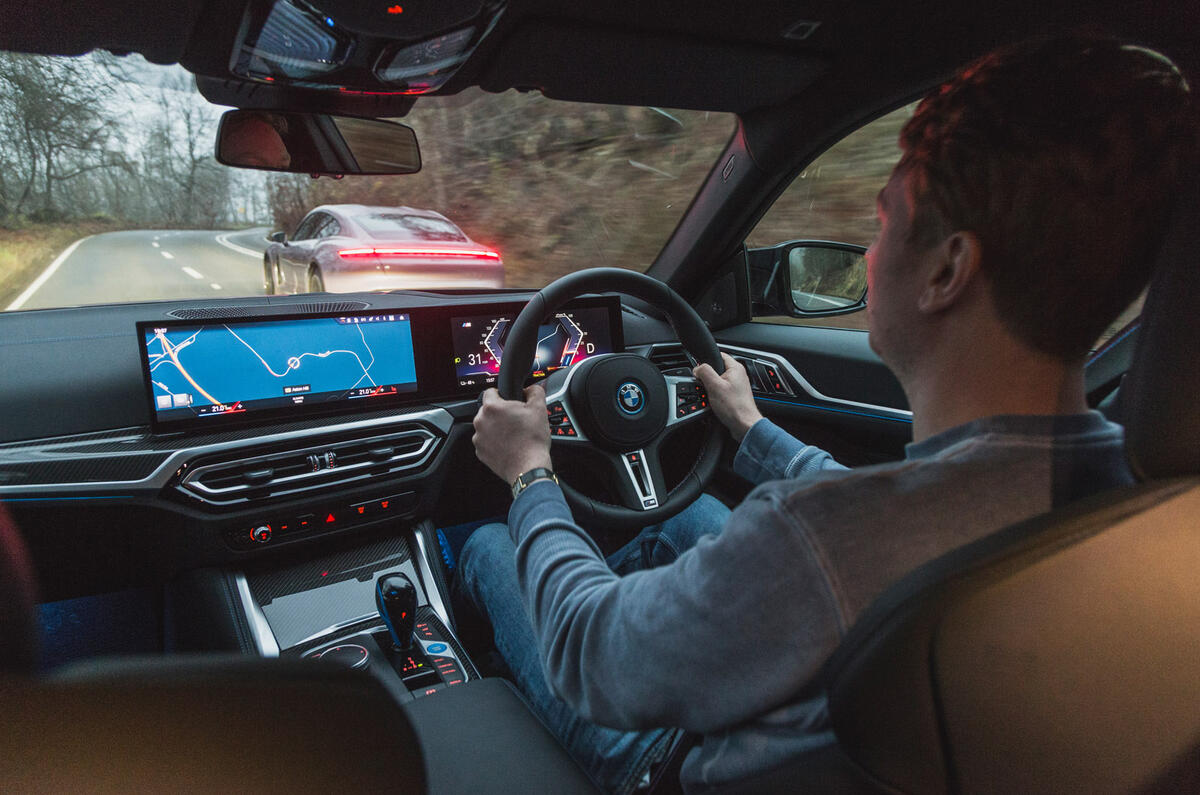
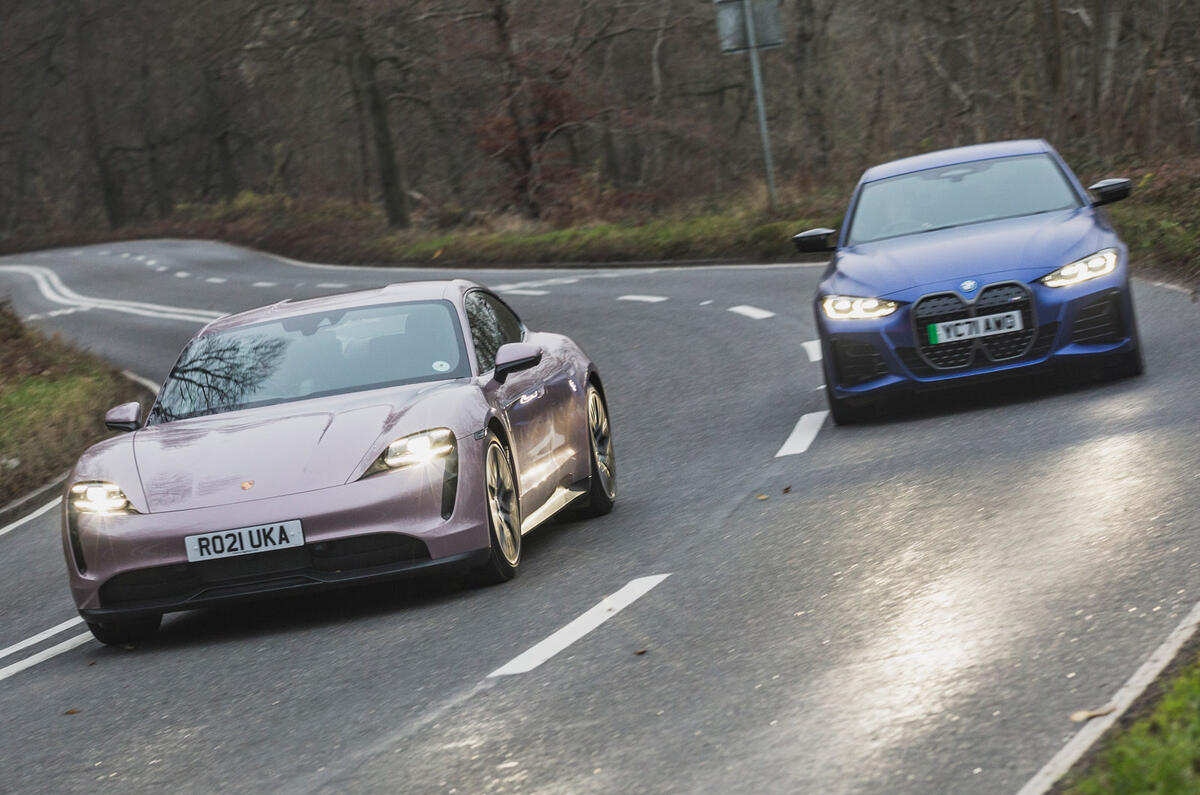
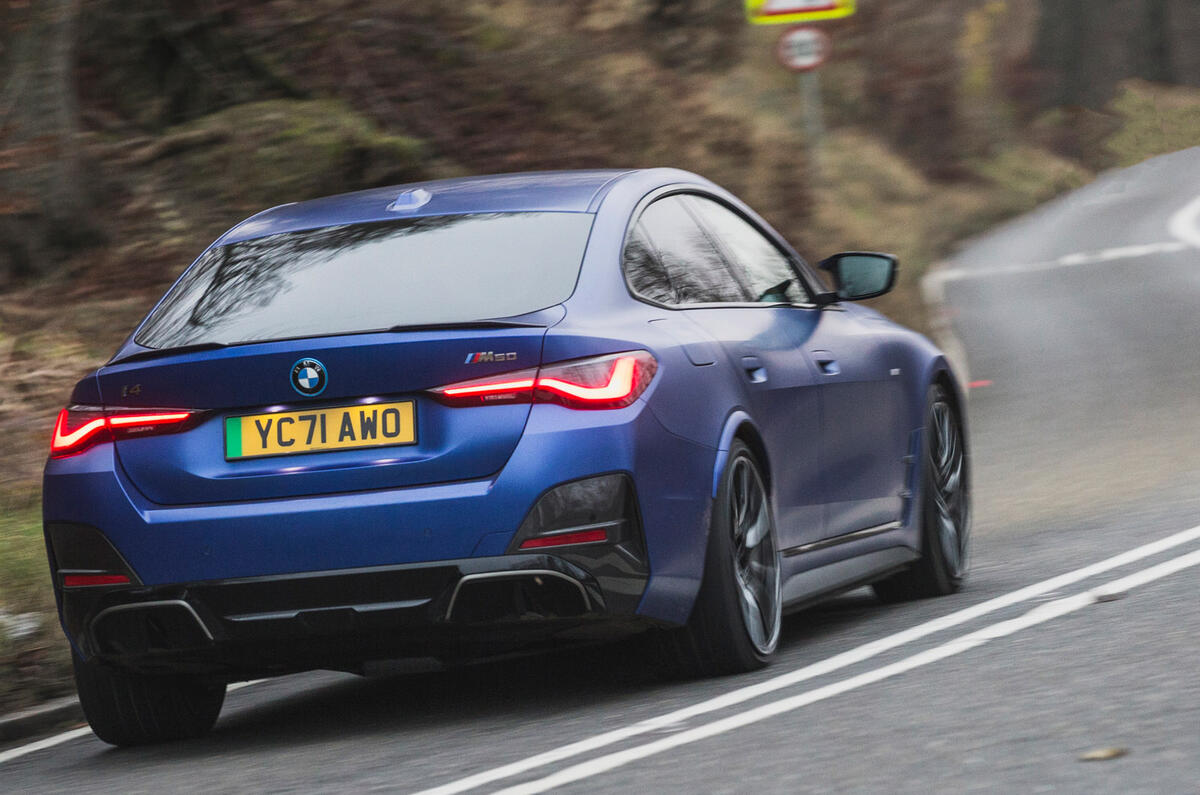
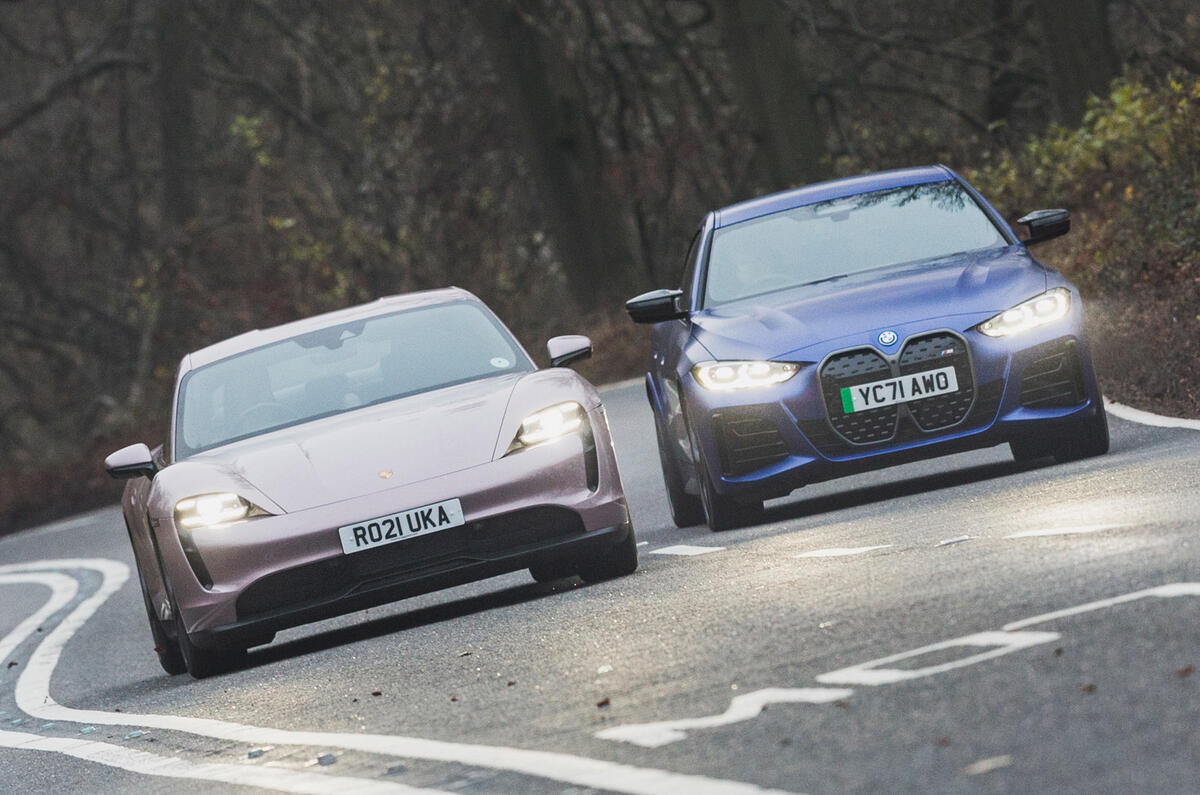
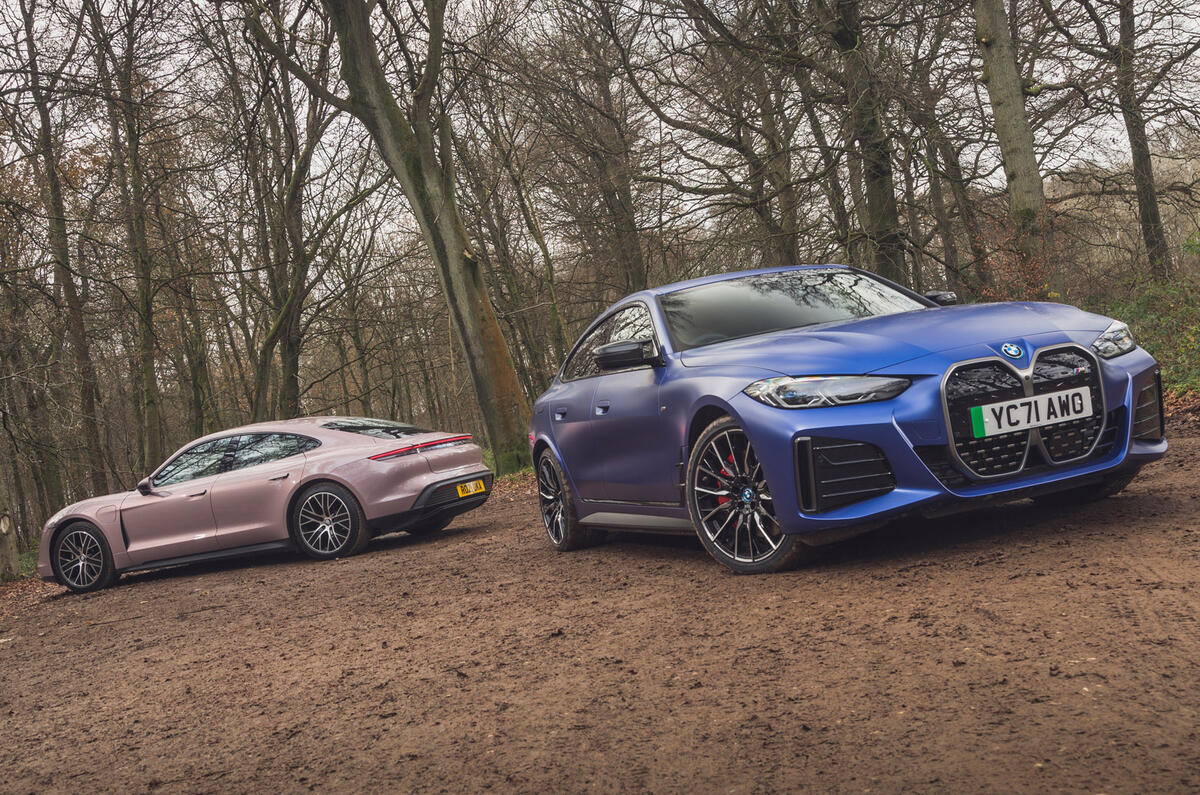
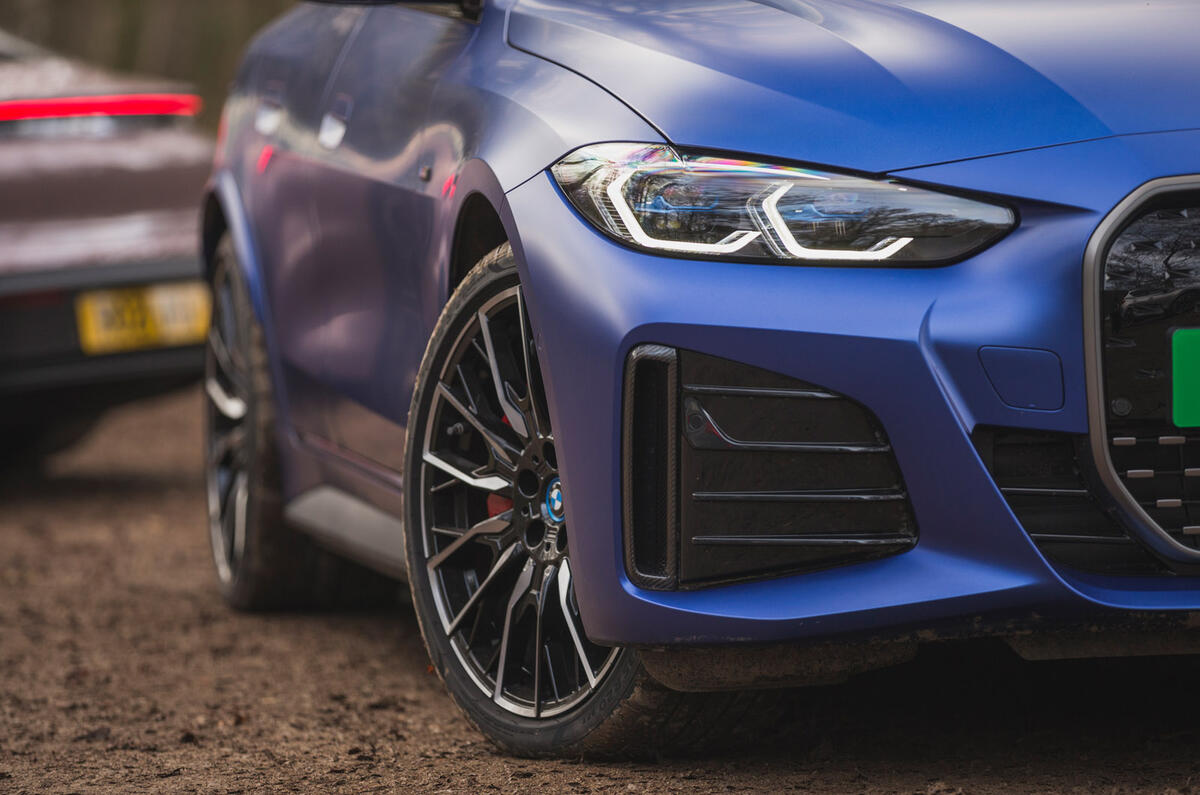
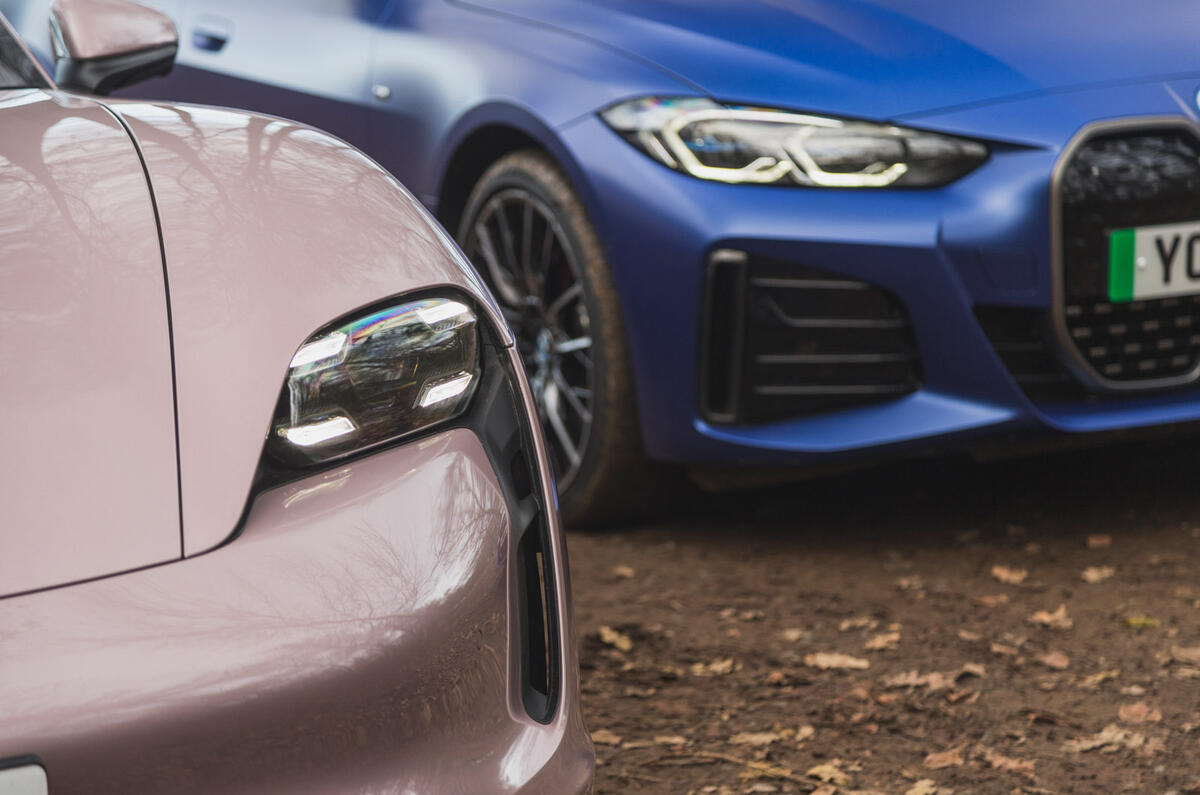
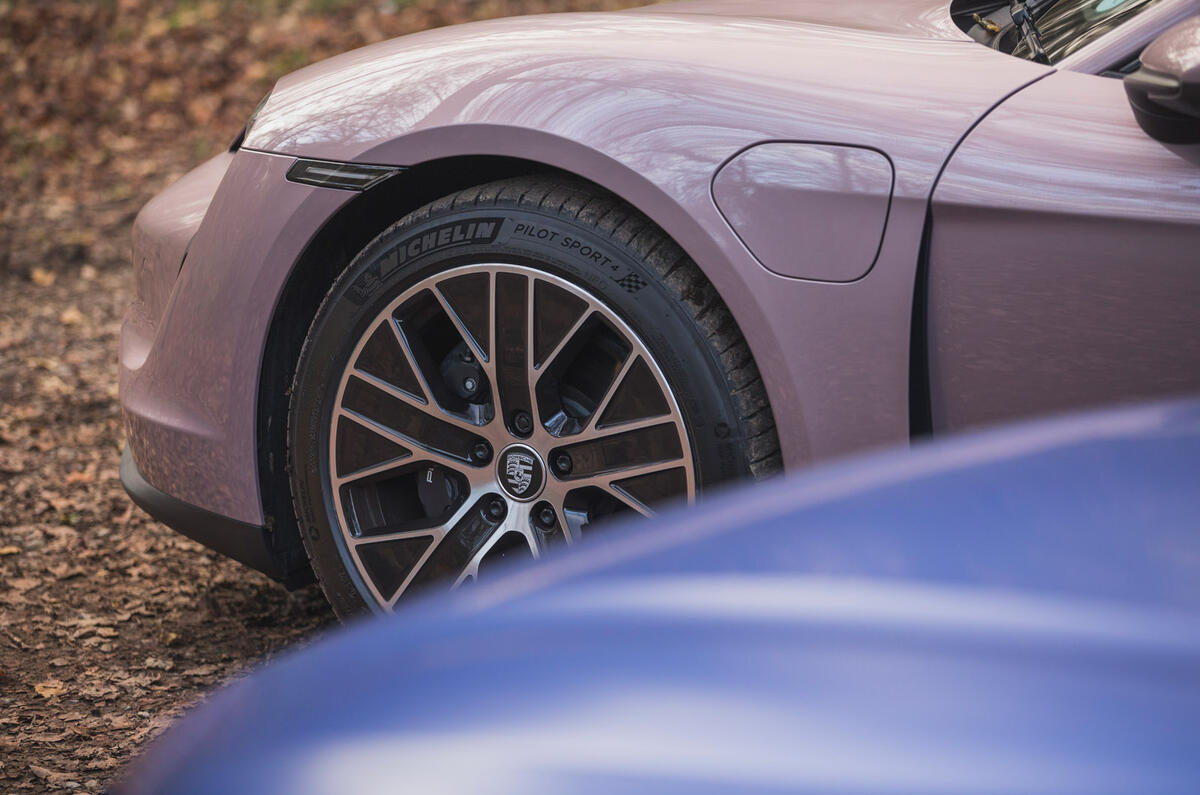
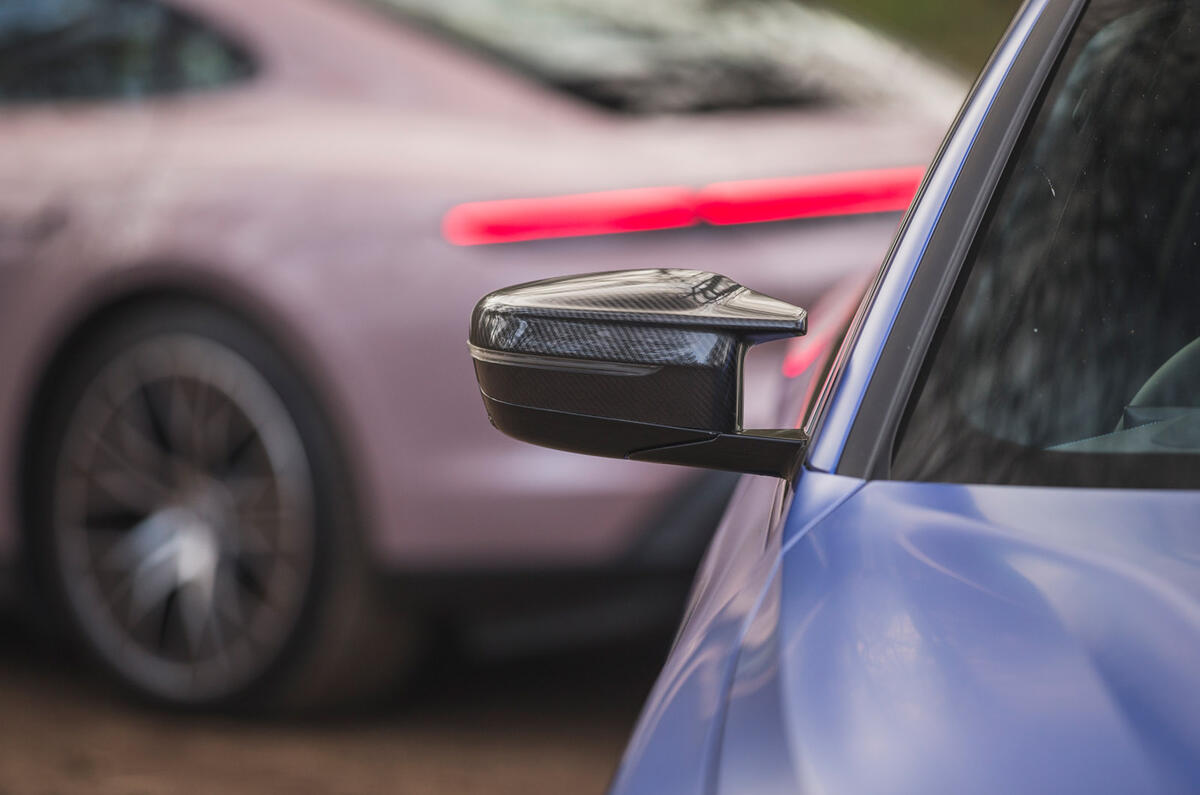
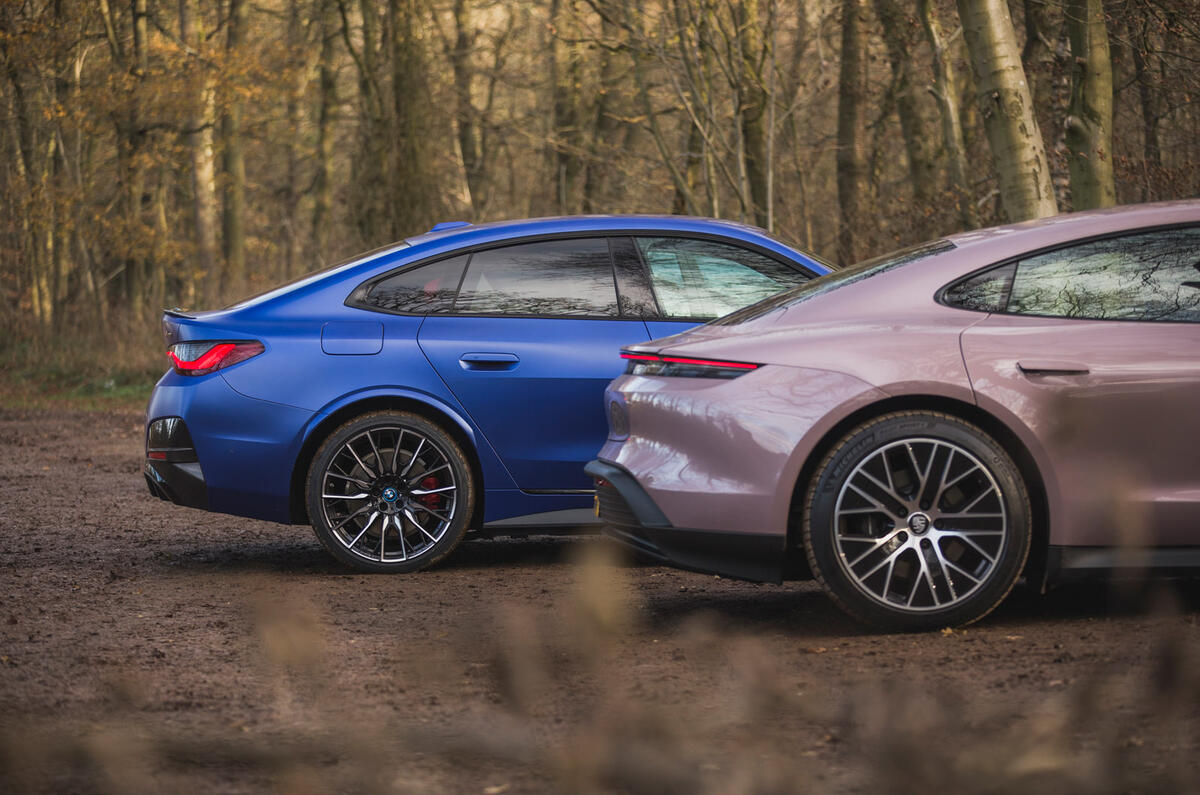
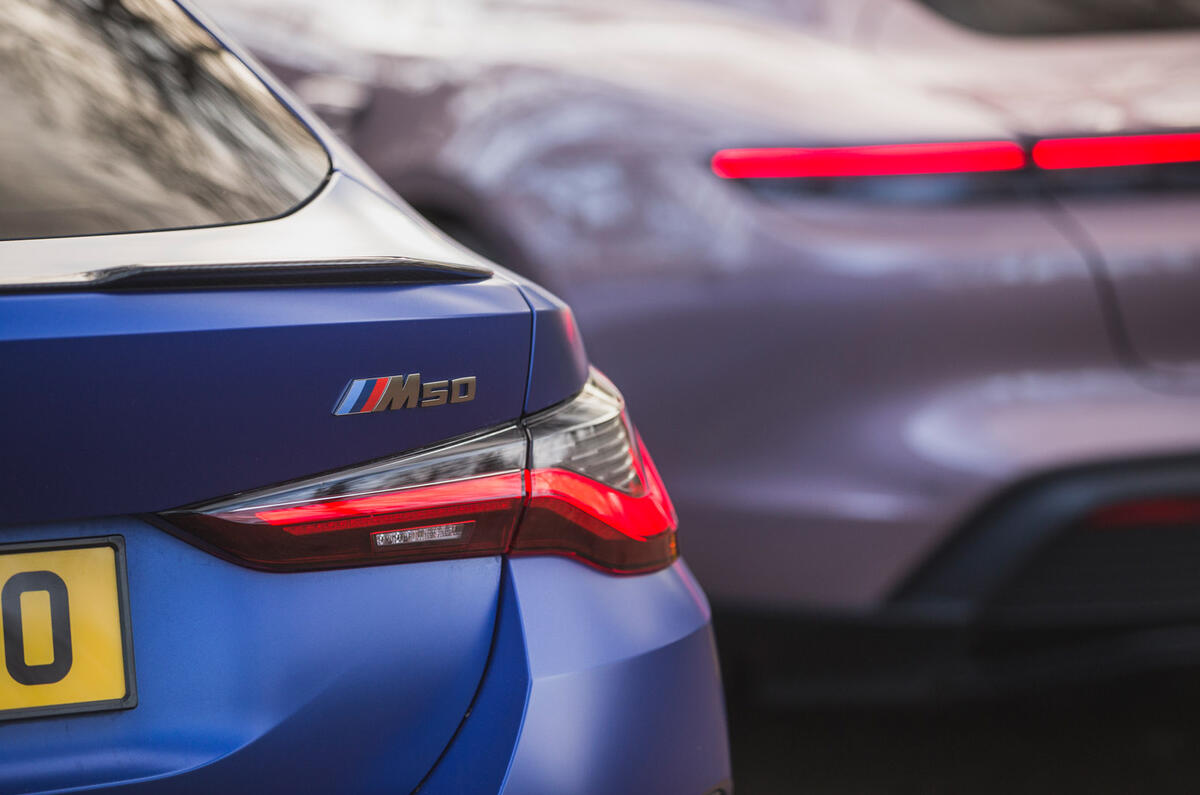
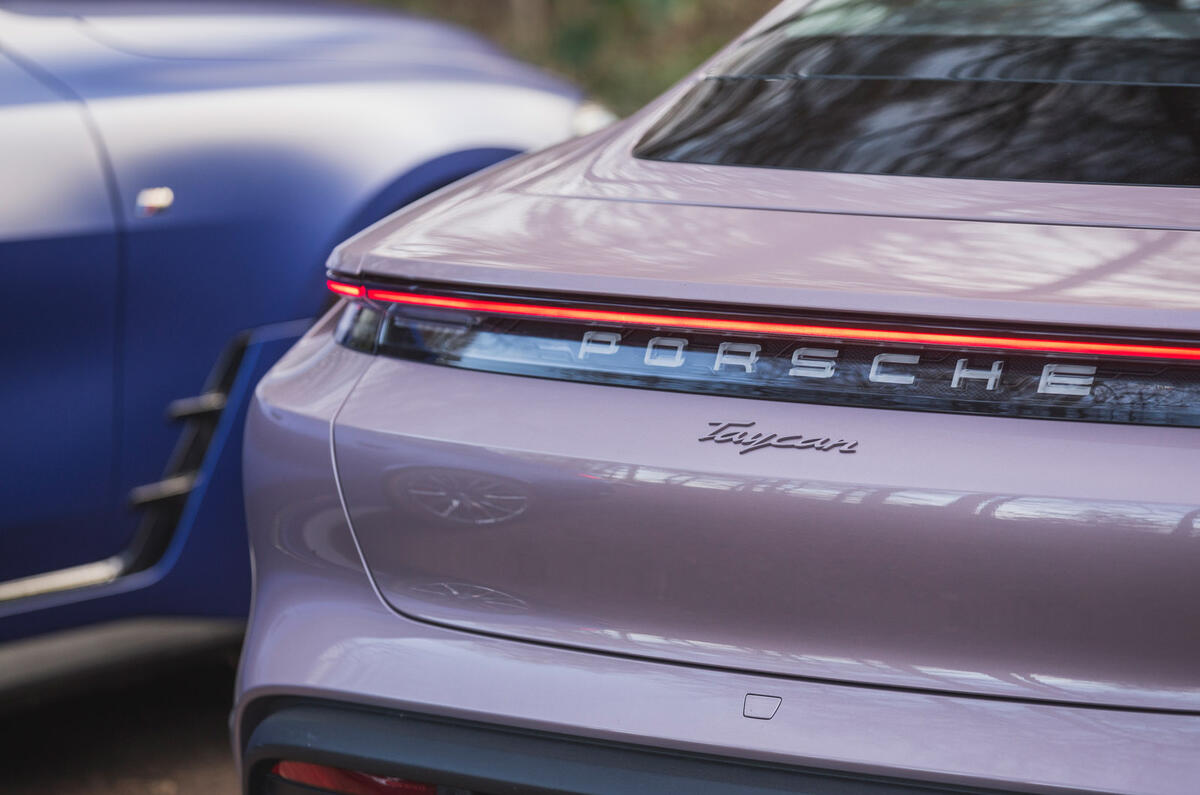
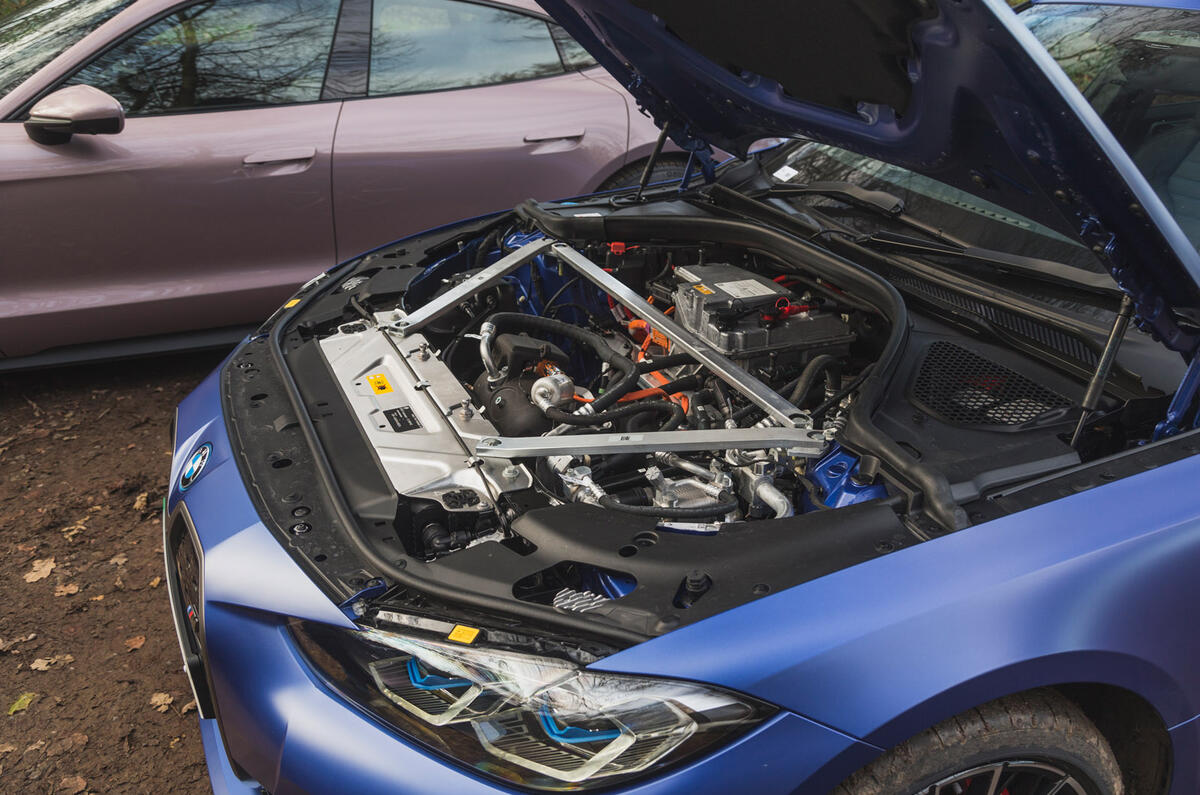


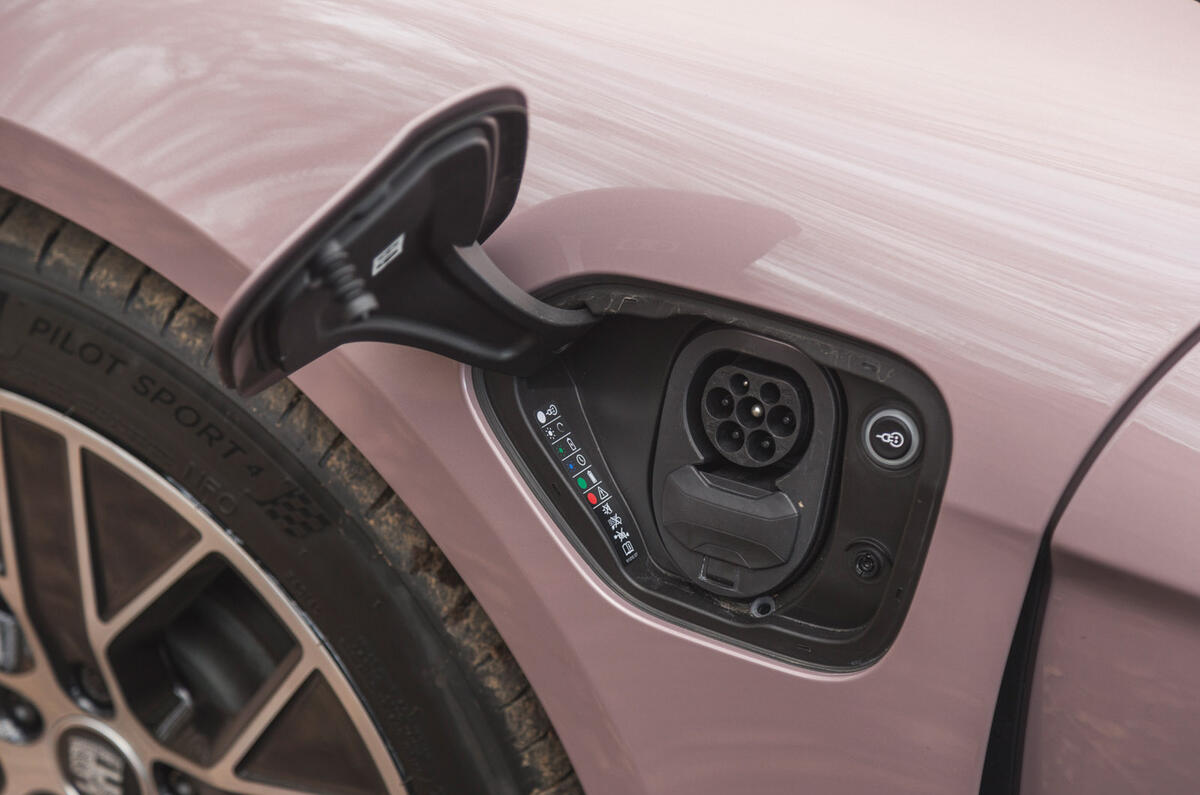
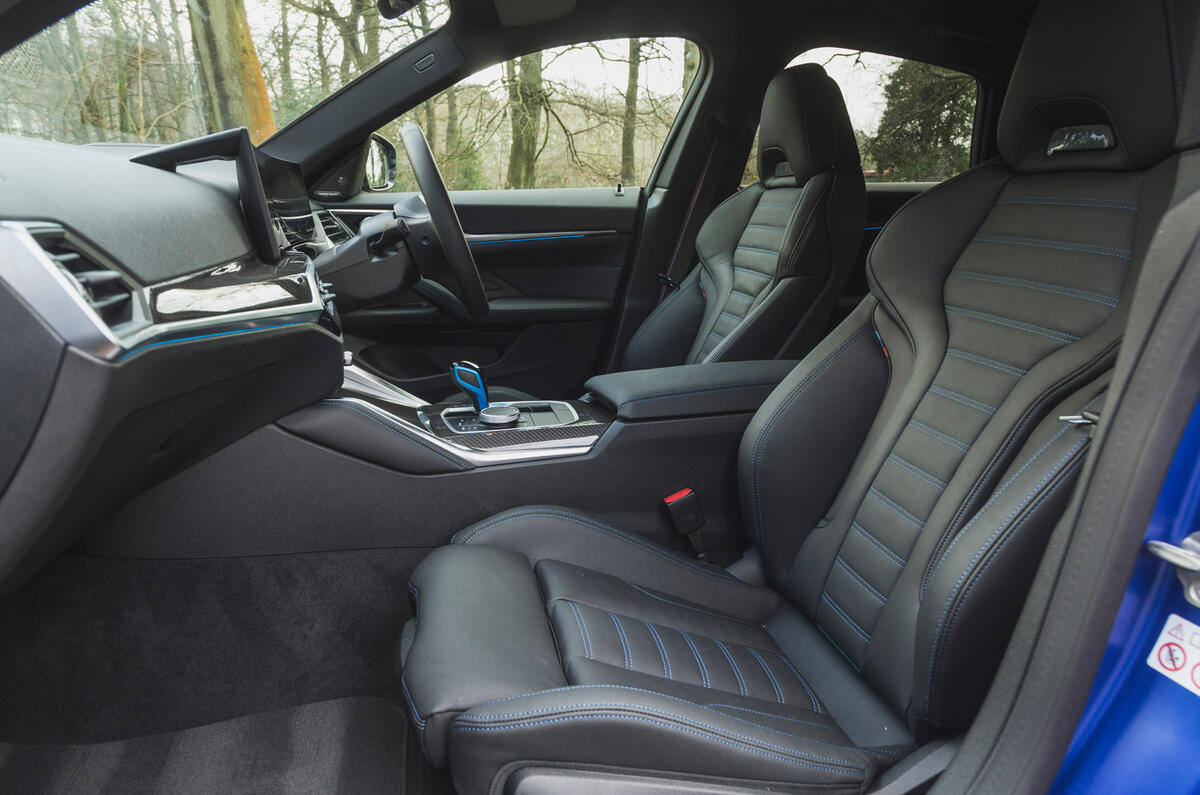

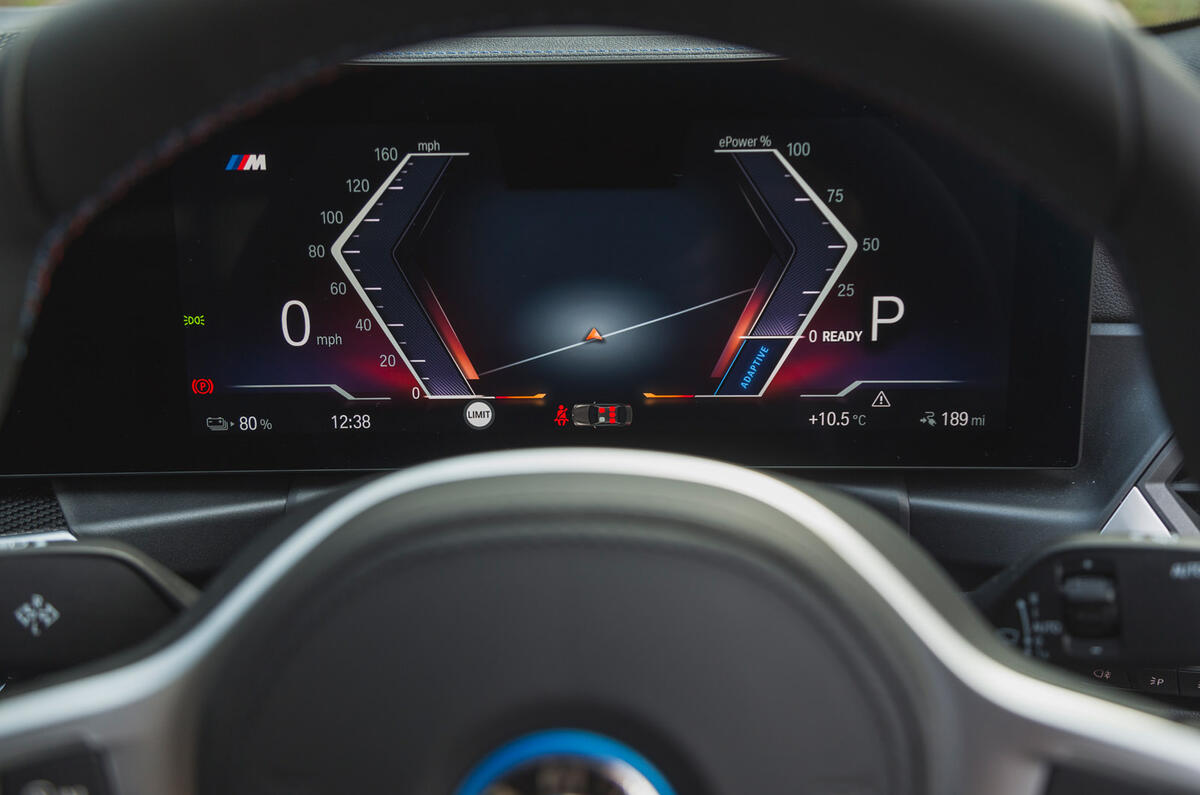
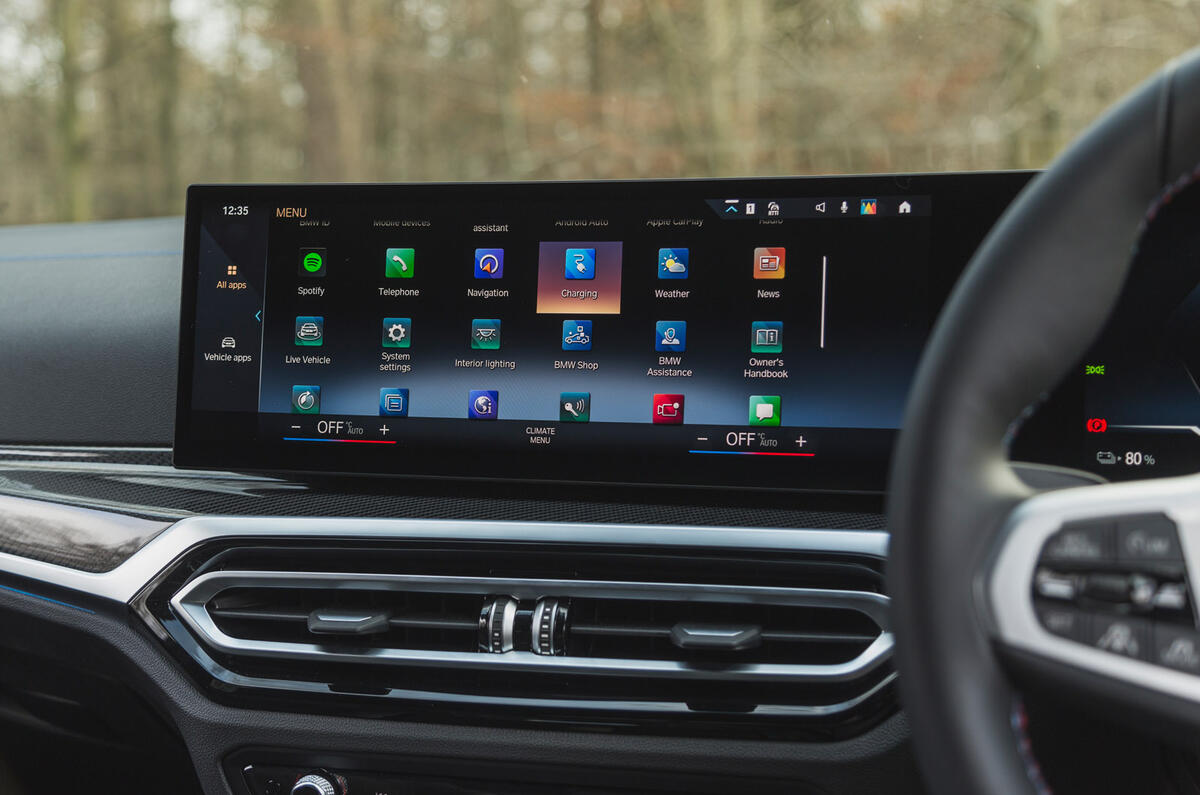
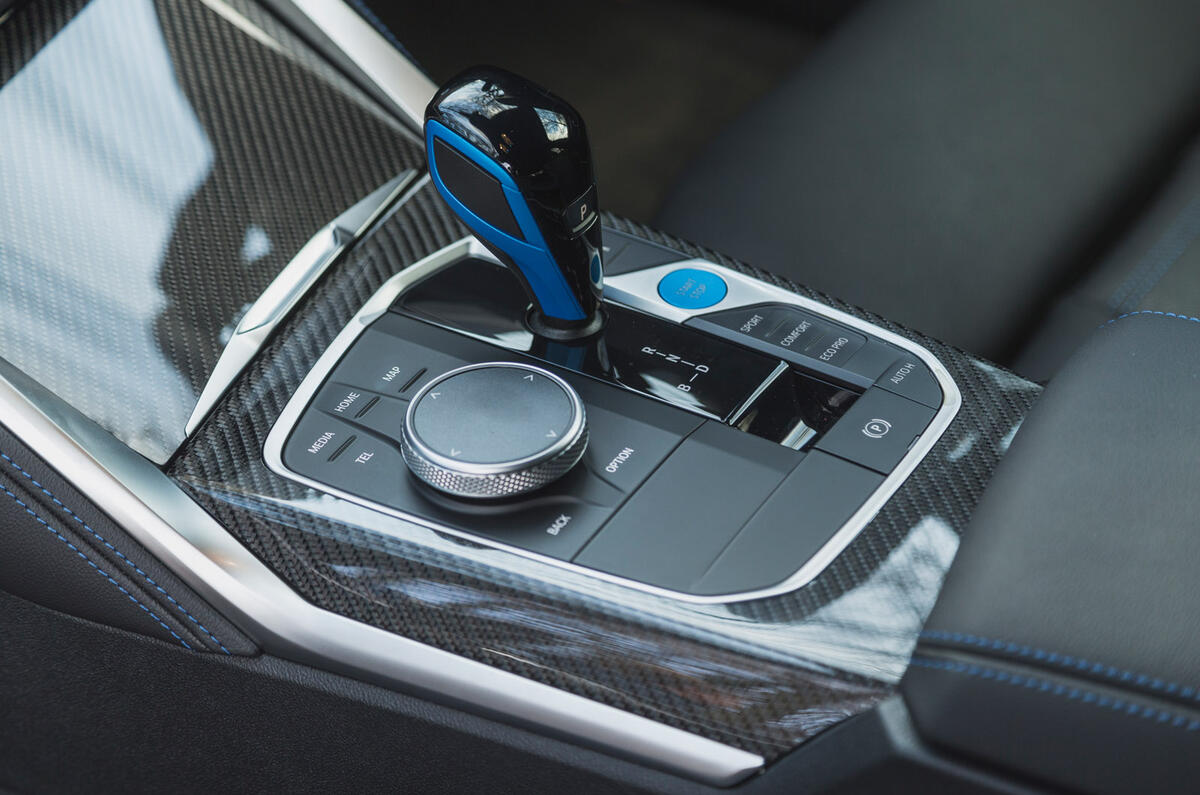
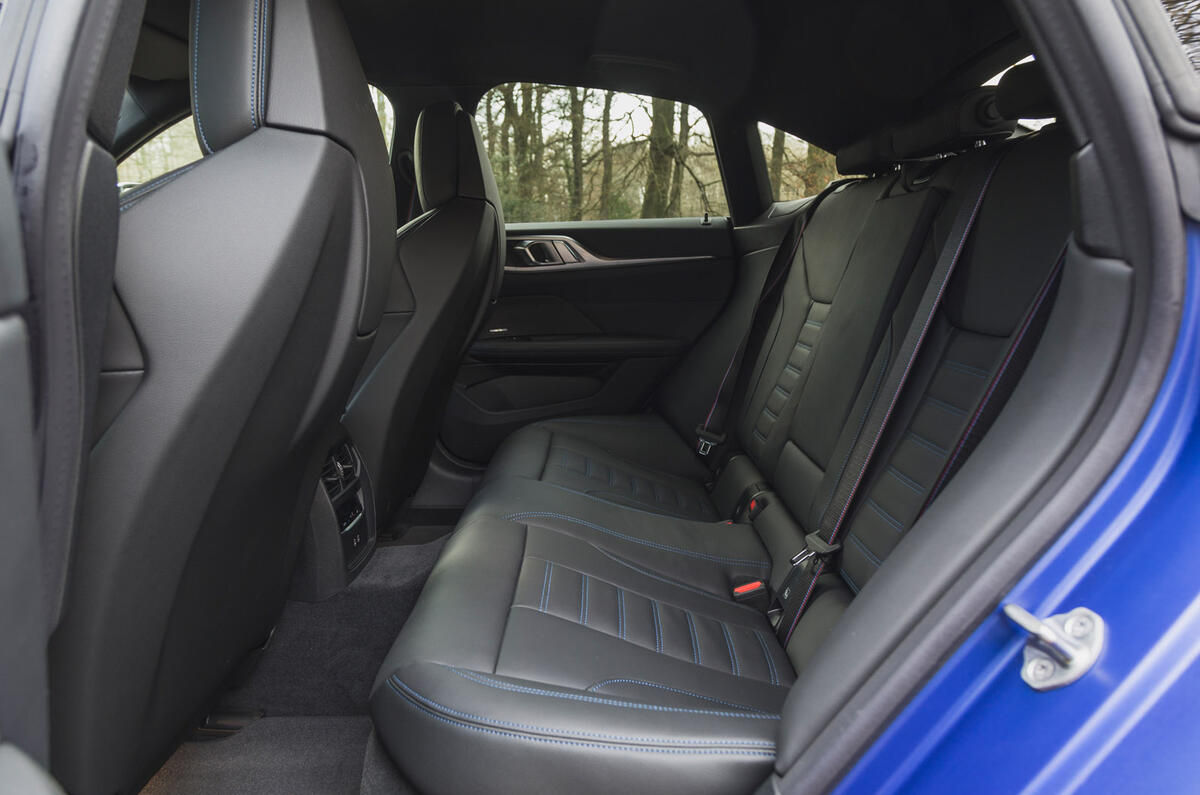
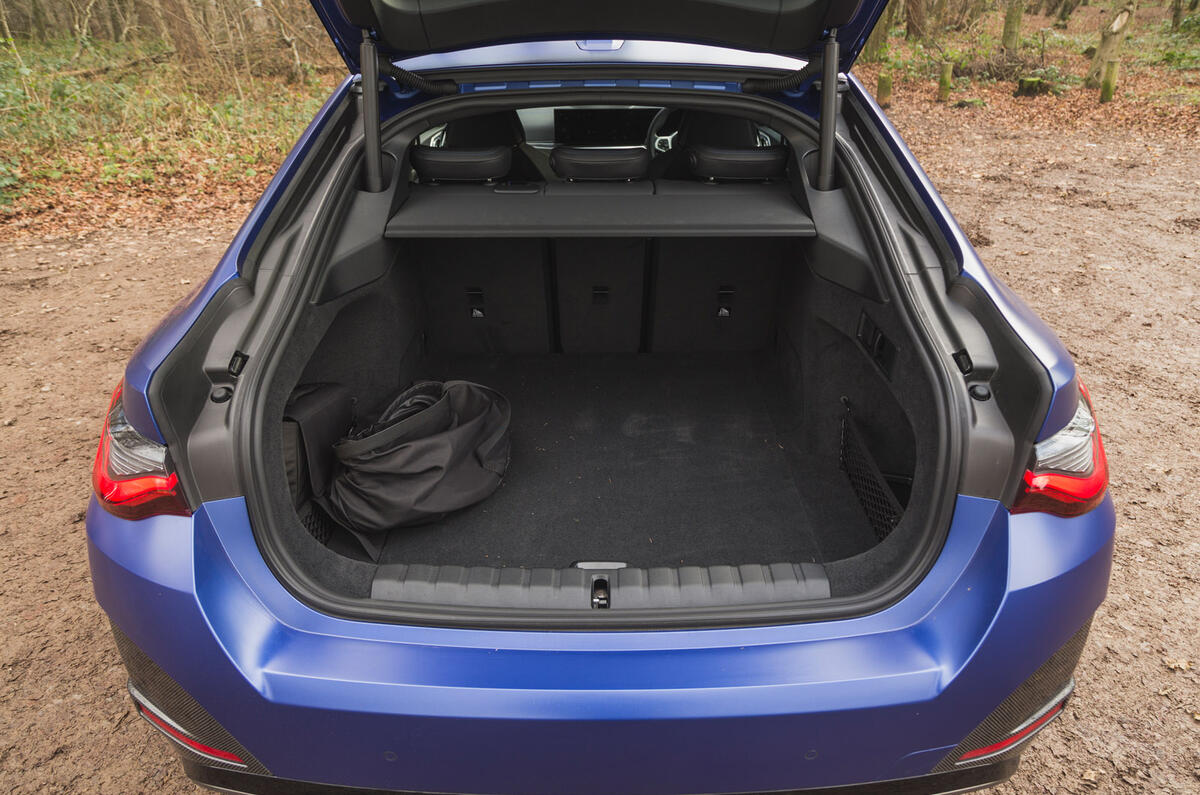
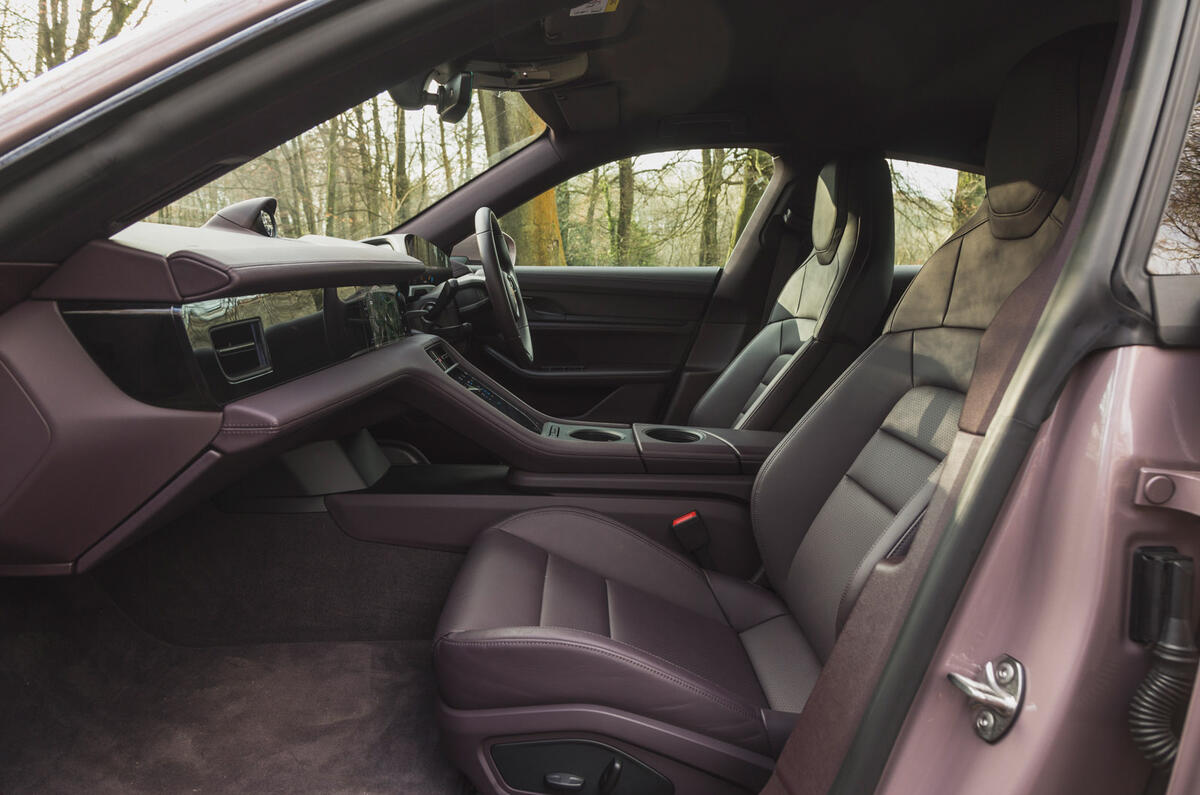
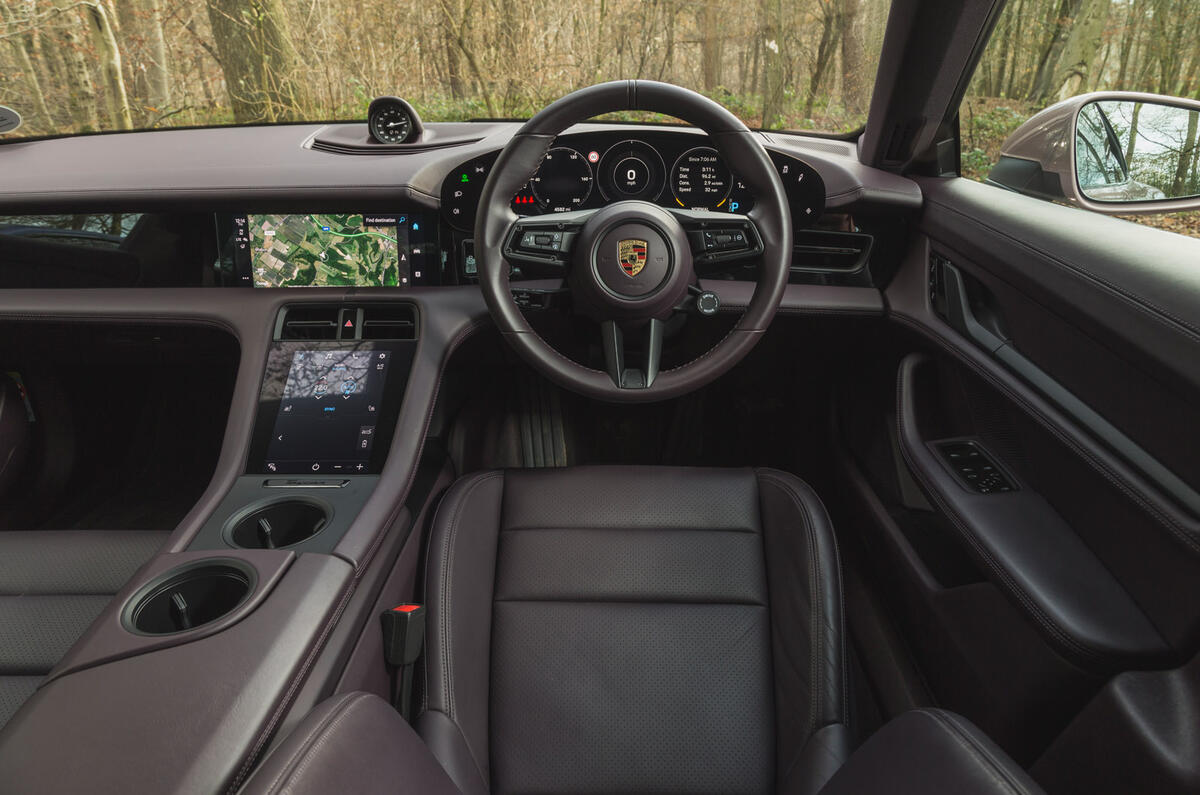
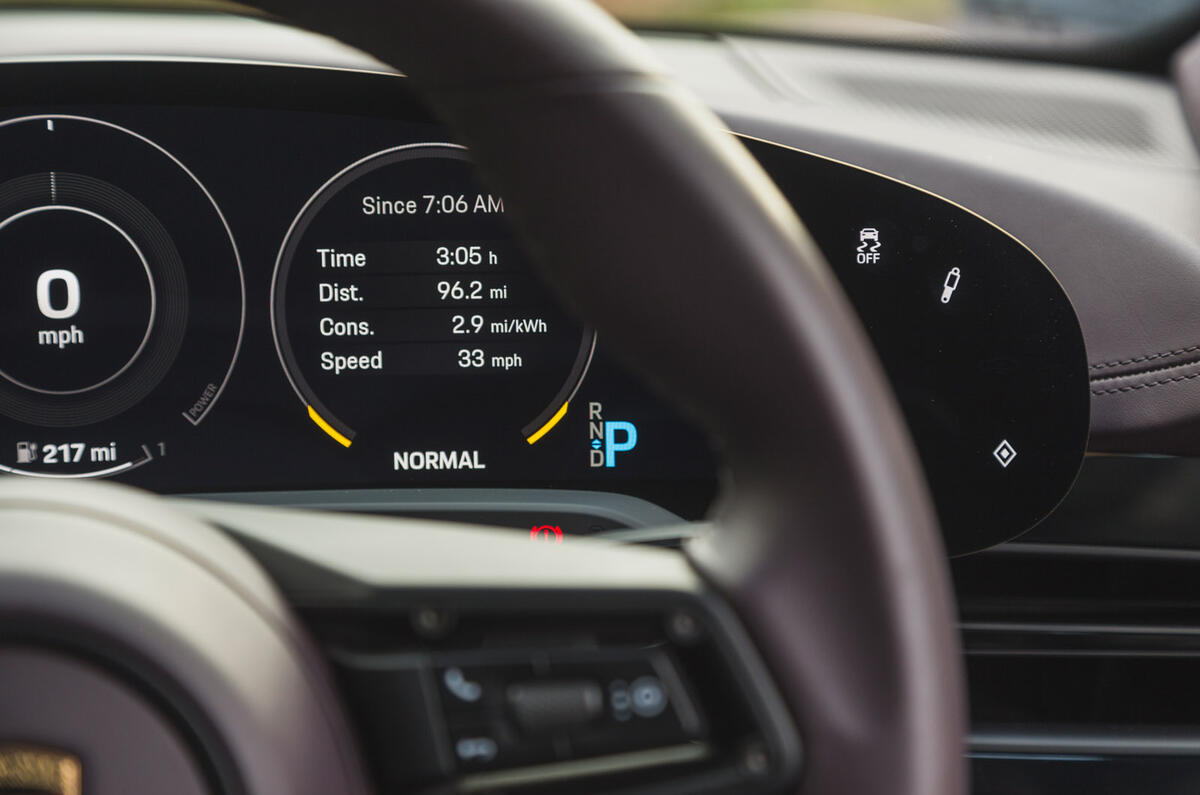
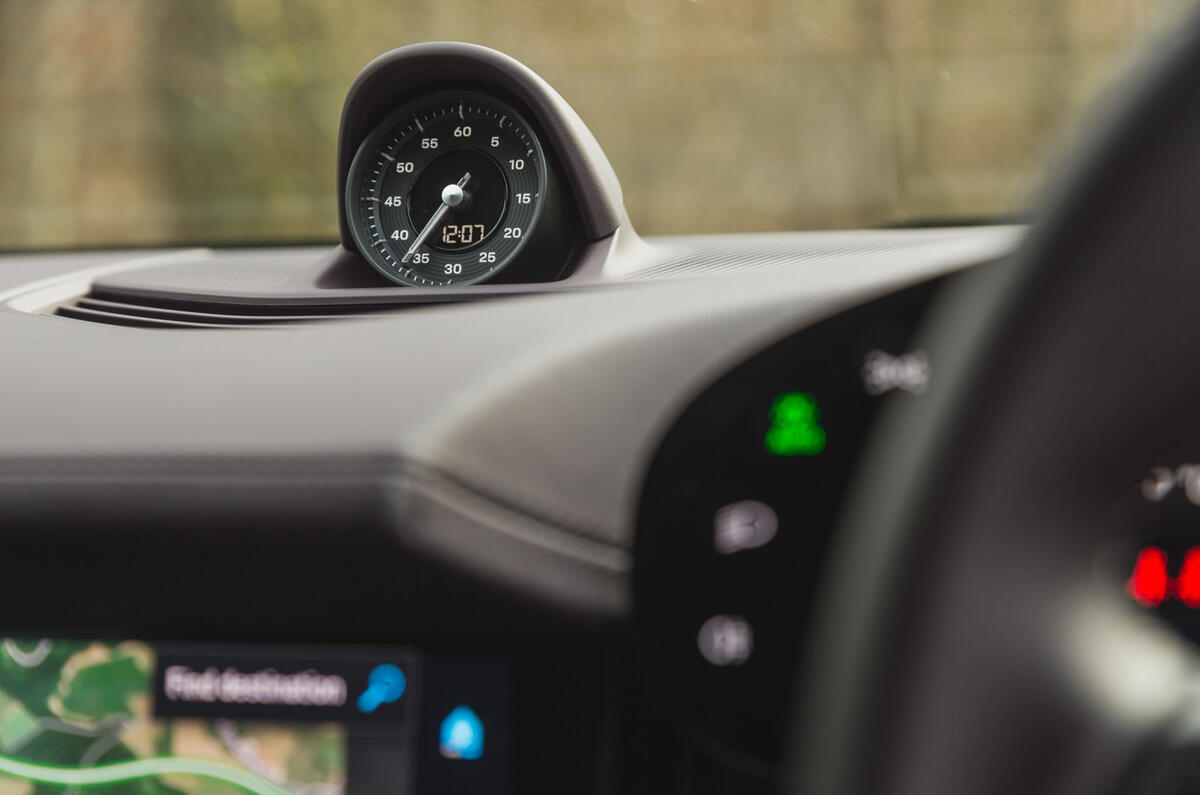
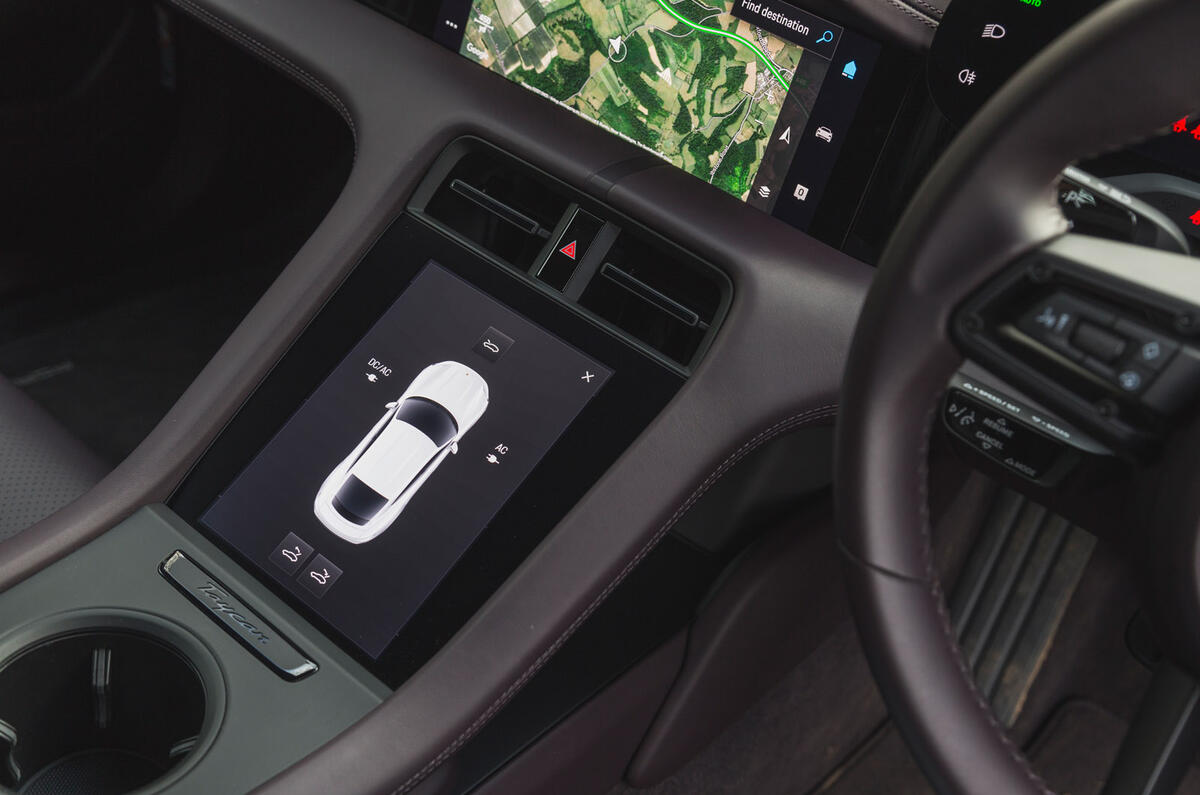
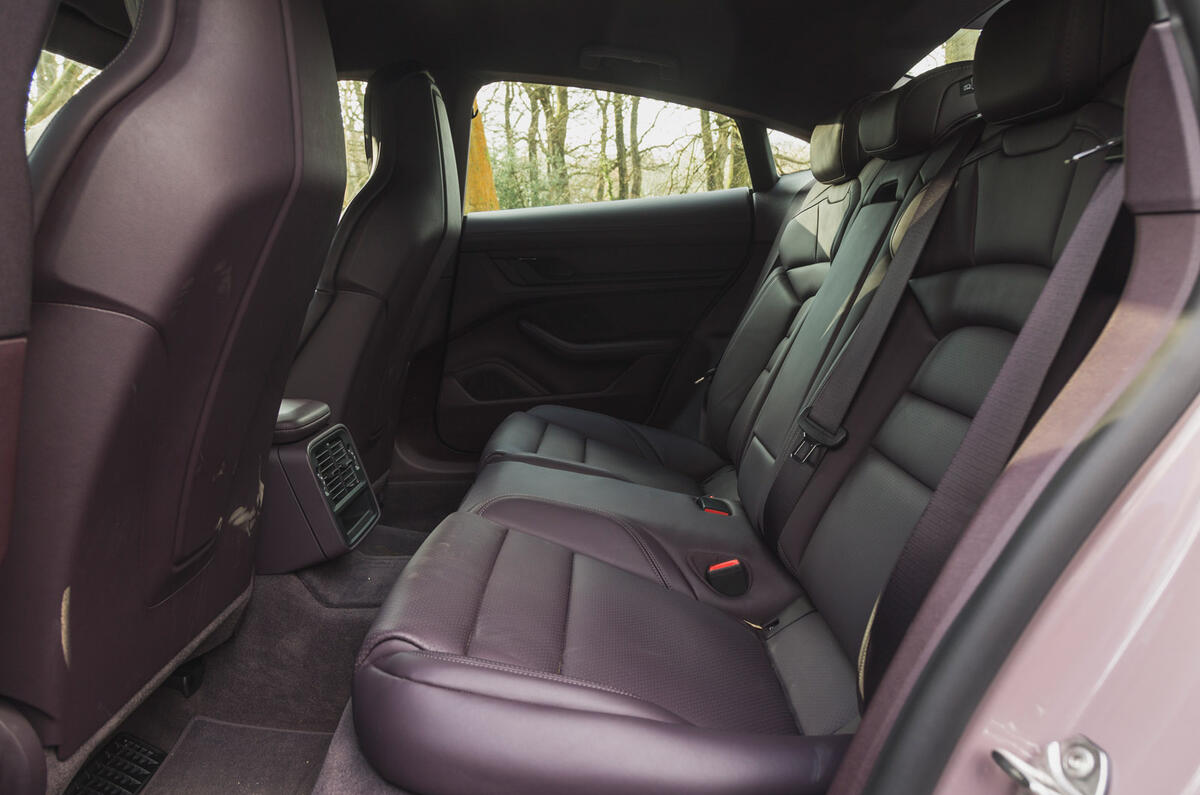
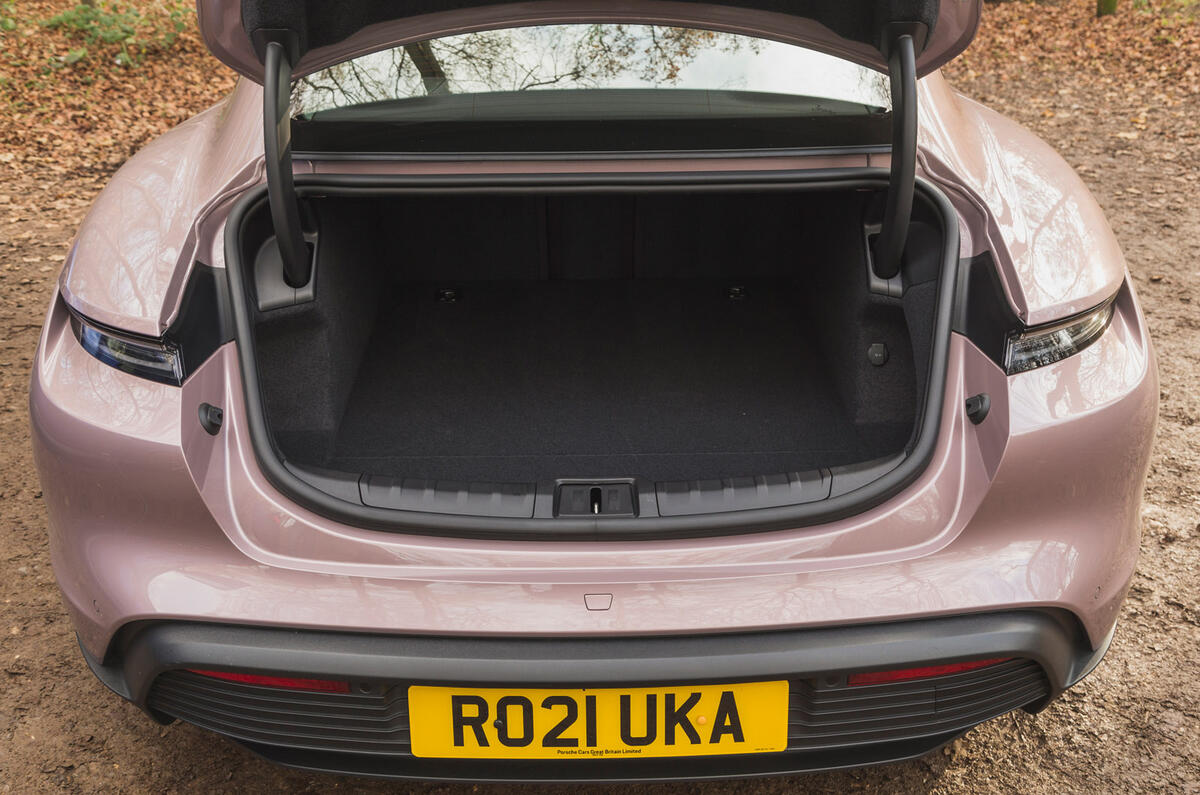
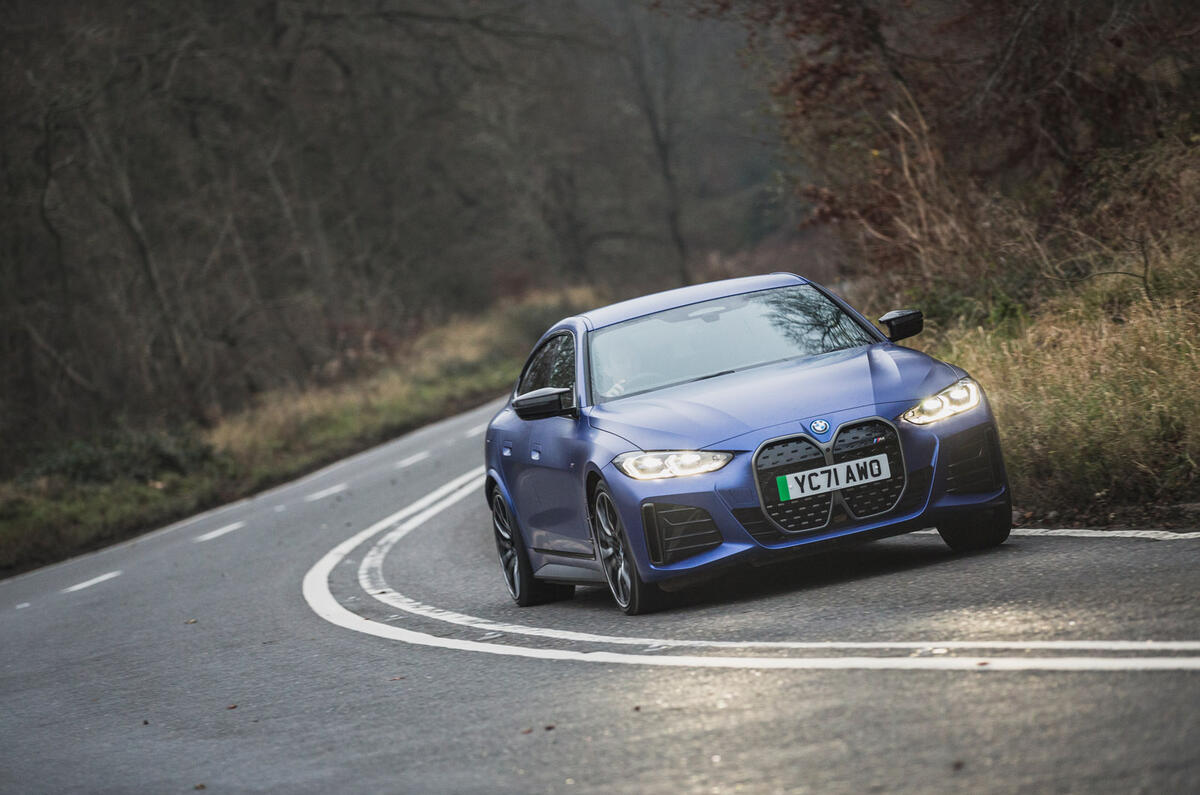
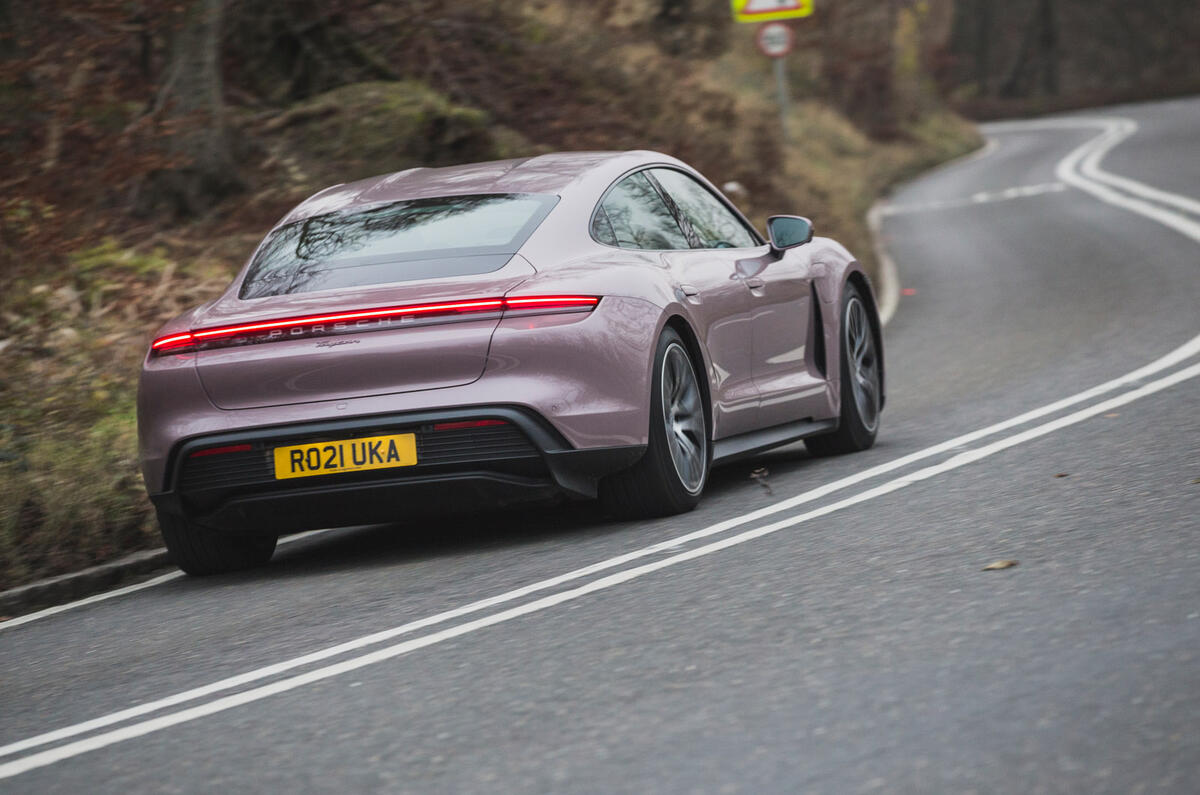
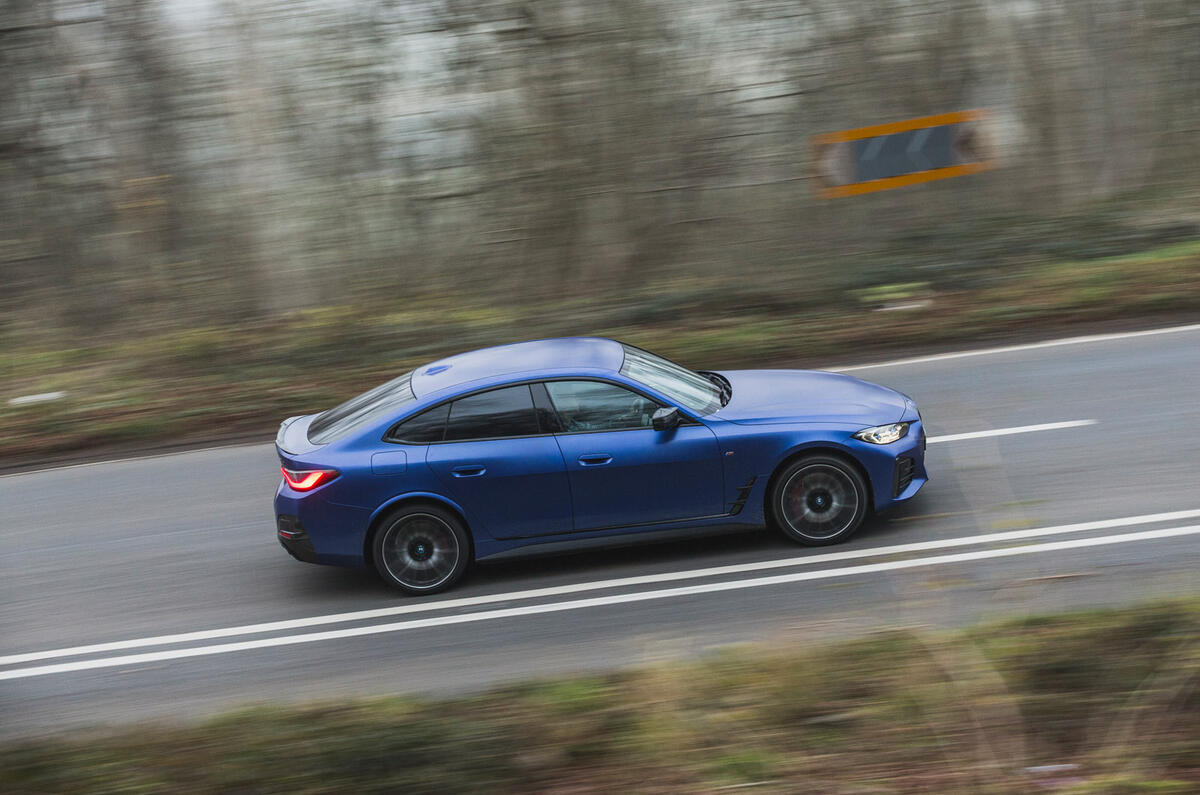
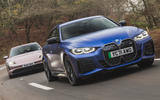


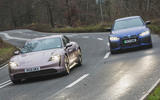
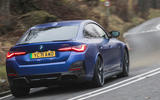
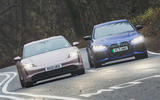
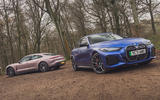
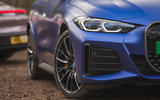

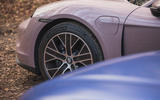
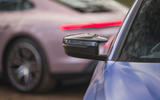
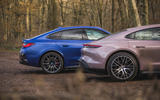
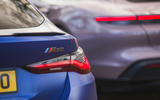
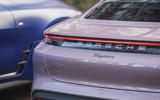
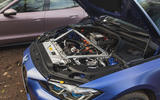

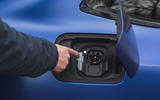
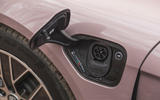
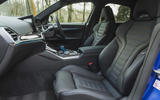
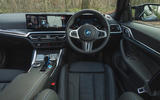
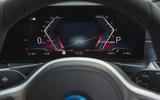
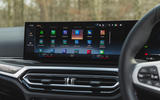
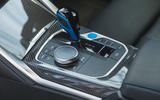
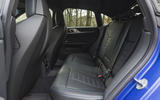



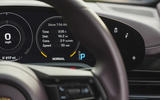
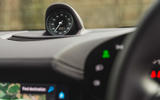
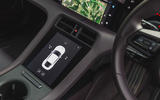
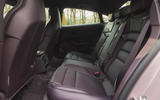
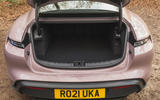
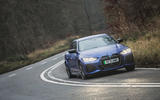
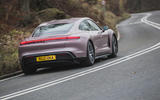
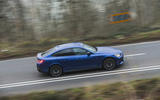

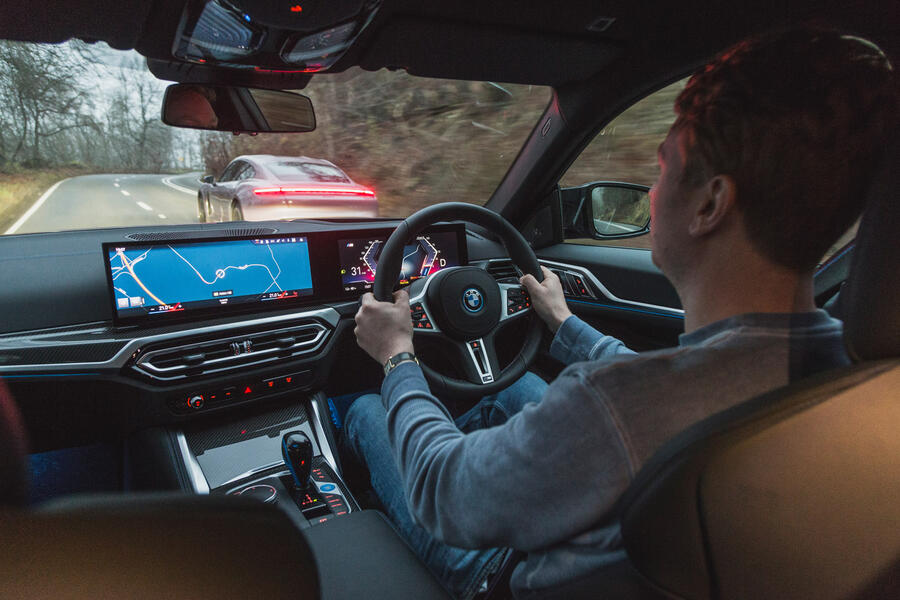
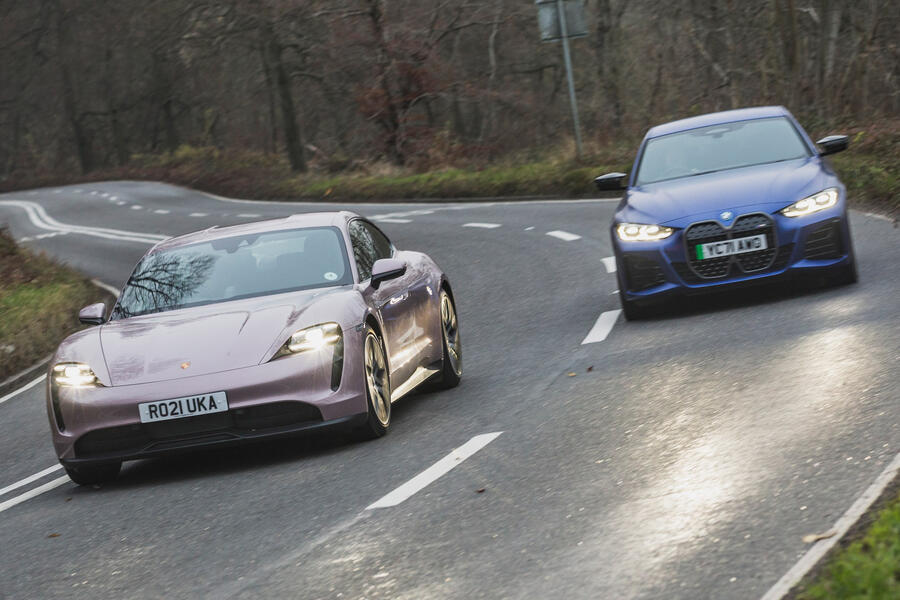





Join the debate
Add your comment
The BMW's hideous pig snout is a 10k demerit. Taycan any day, just in a different color.
Your money your choice, yes, I've trotted this one out before, but it's true, if you want it in your choice of spec and colour etc that's fine, you have to live with it, this article is the journos opinion, it's not the definitive.
The i4 40 has to be the closer match to the base Taycan. Then you are looking at similar rear drive cars, a lighter BMW with longer range, lrss corrupted steering and a £30k price advantage.
I don't see any way, other than the esoteric driving emotions of Autocar testers, that the Porsche wins that contest.